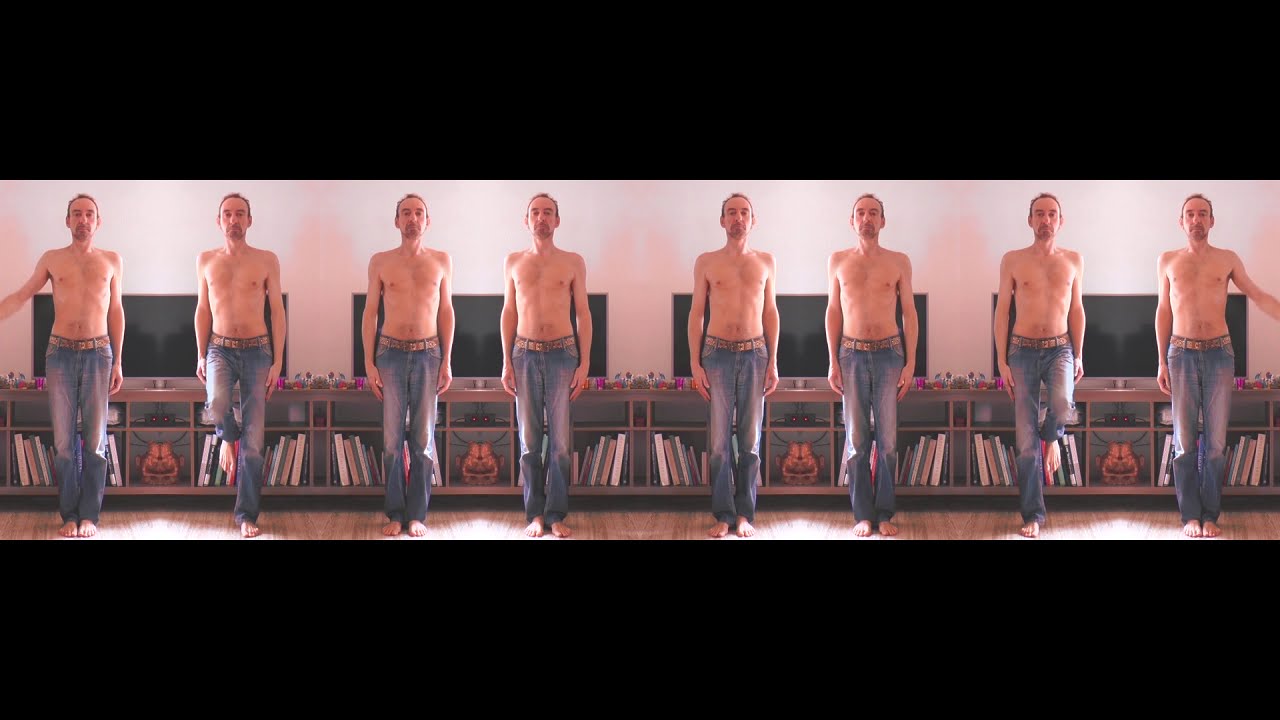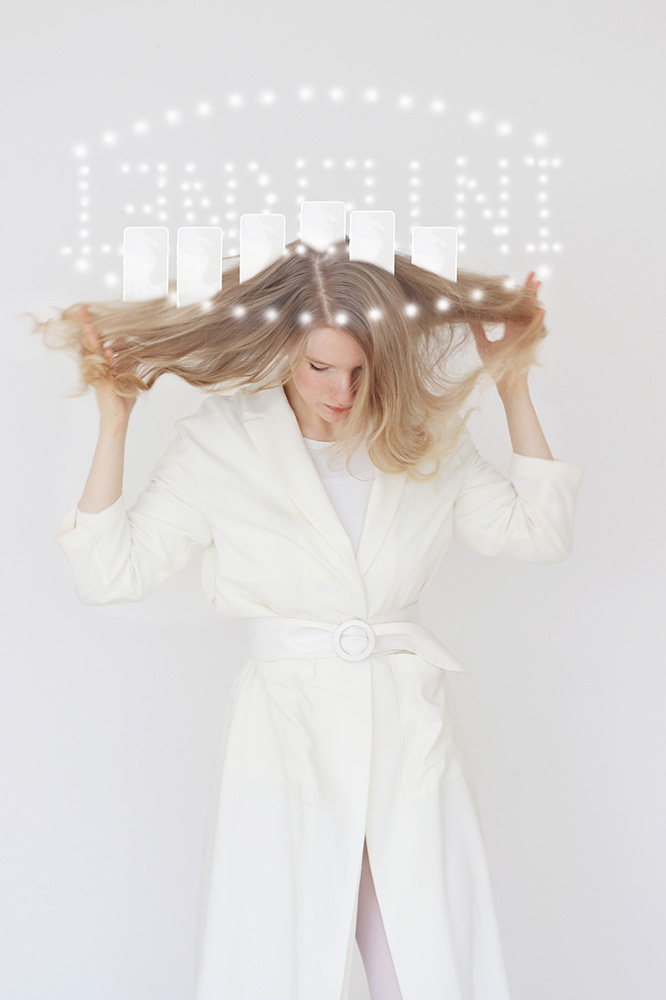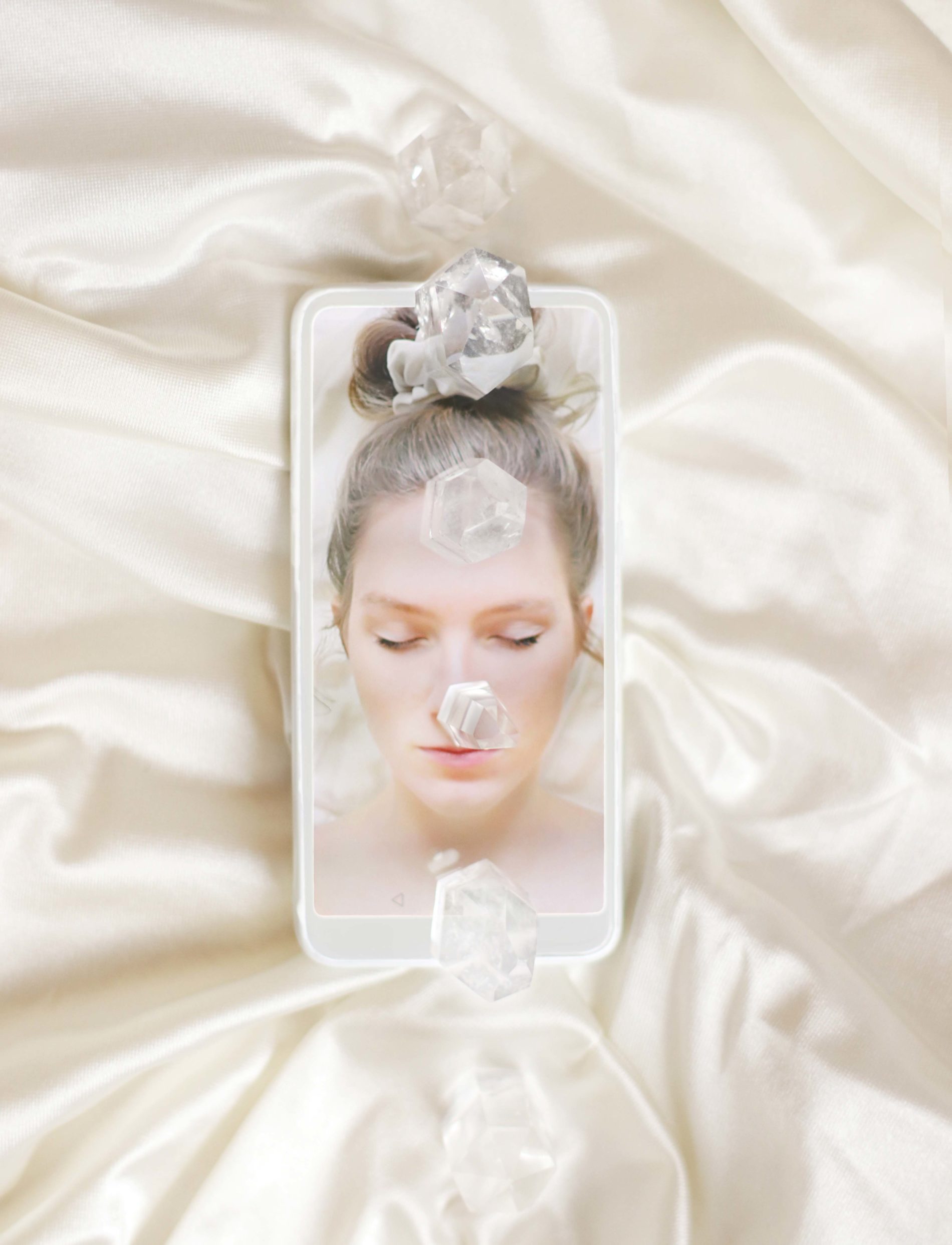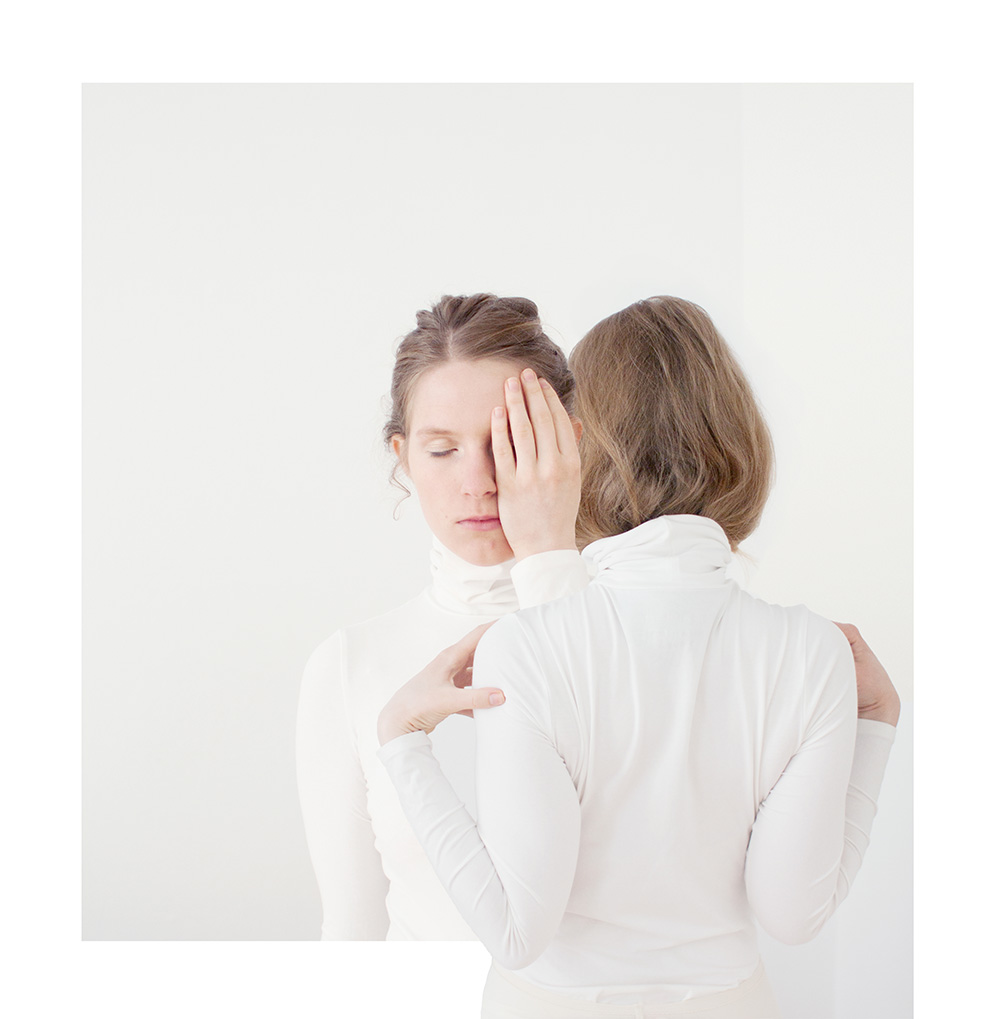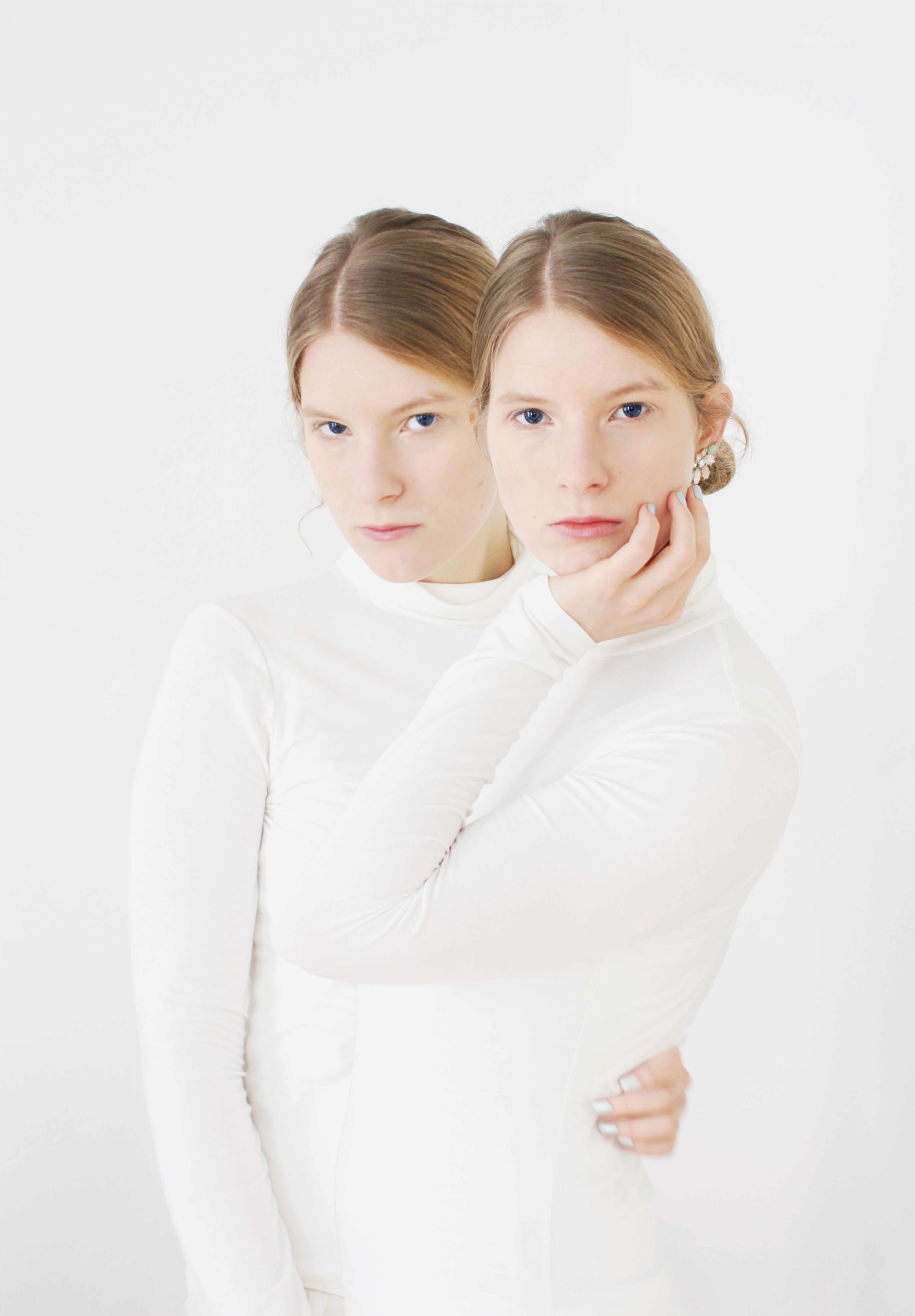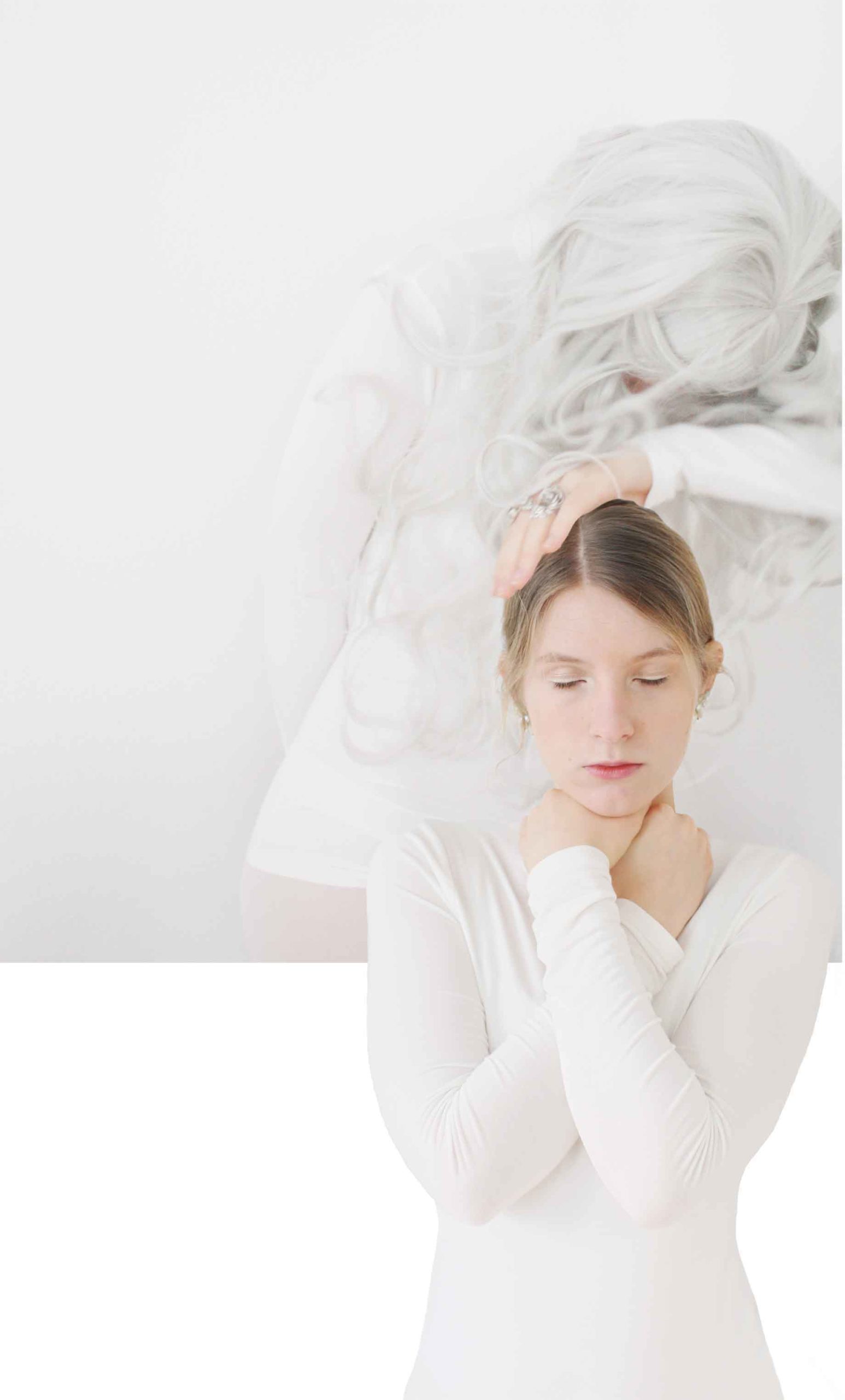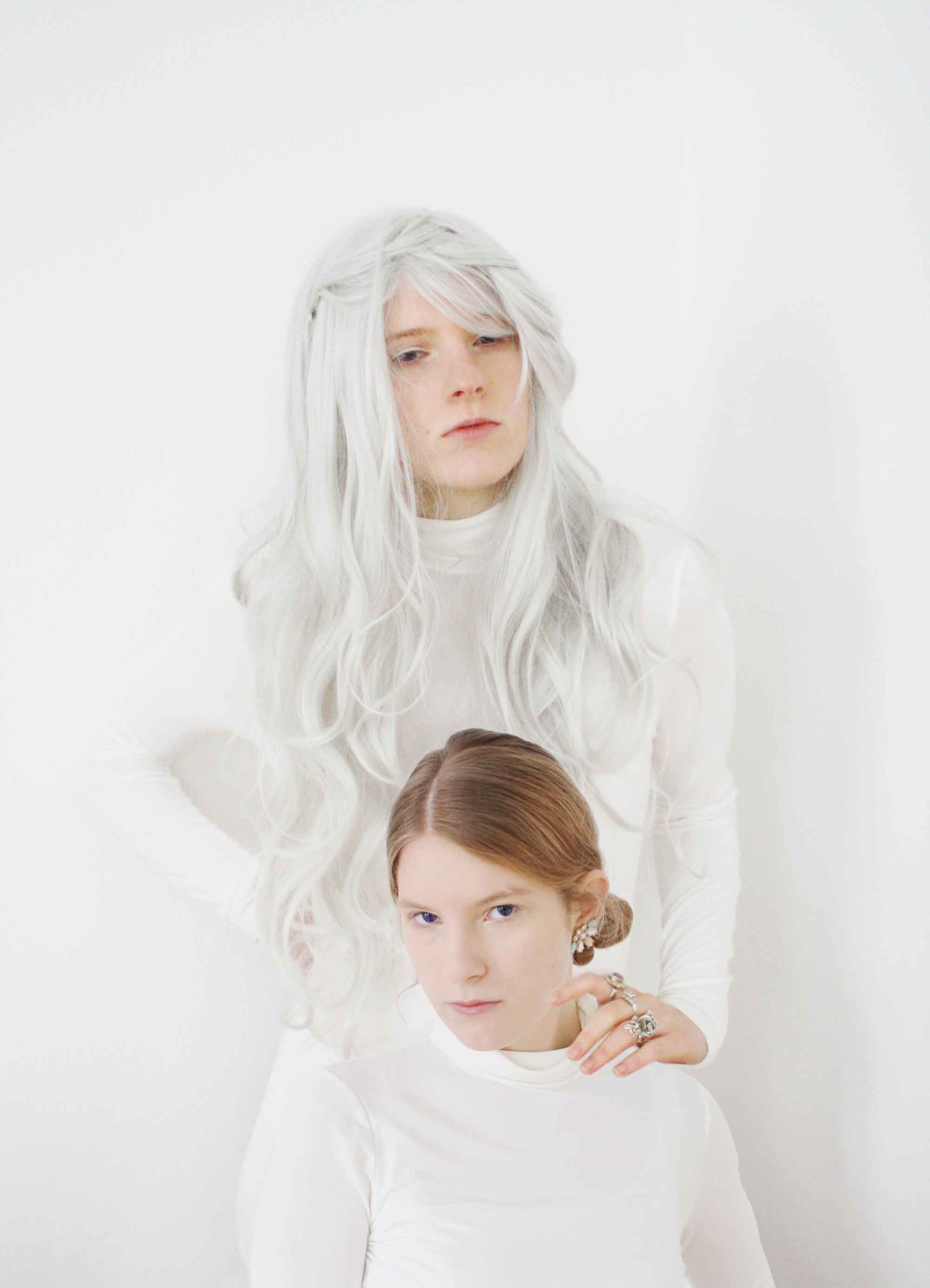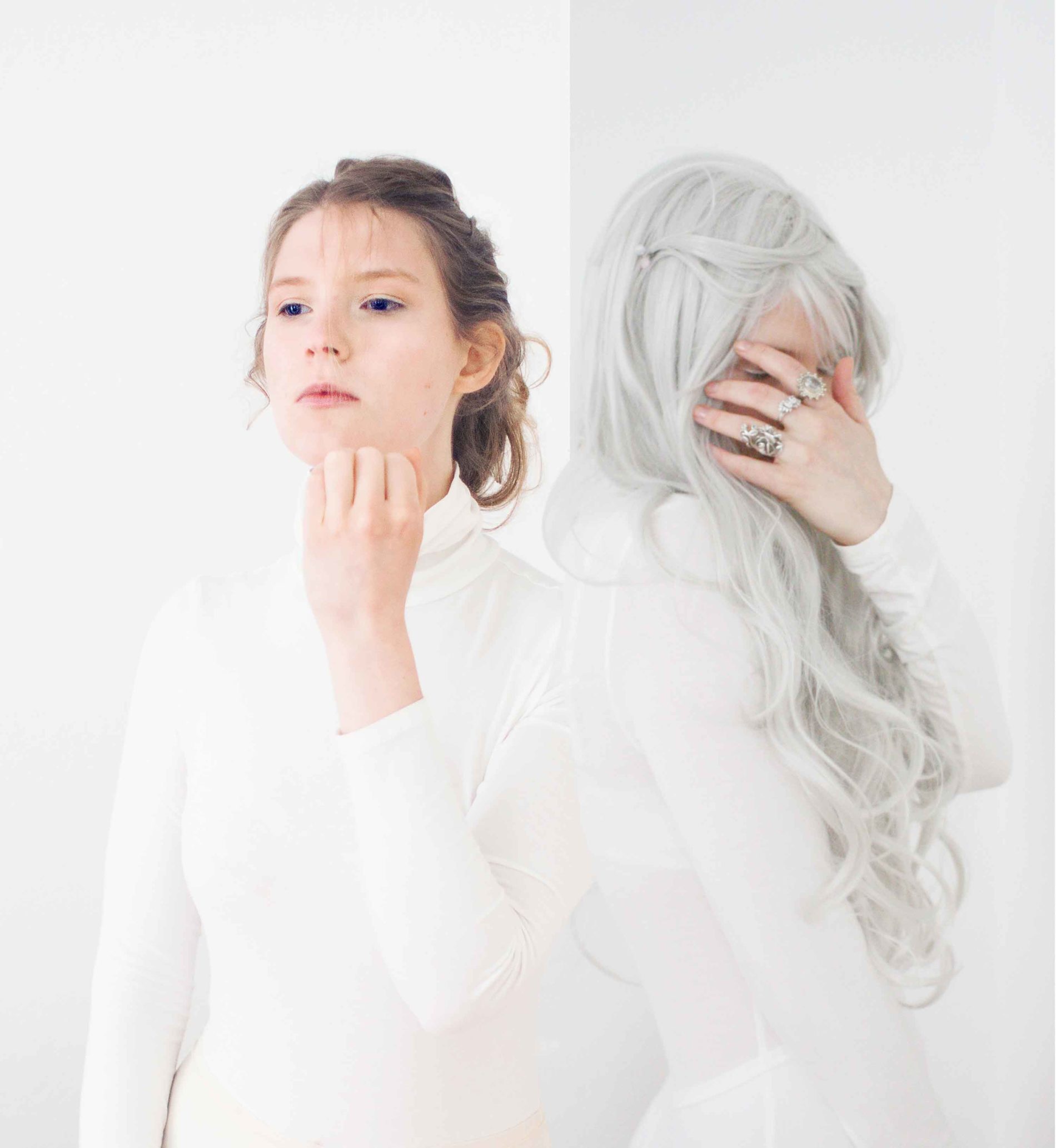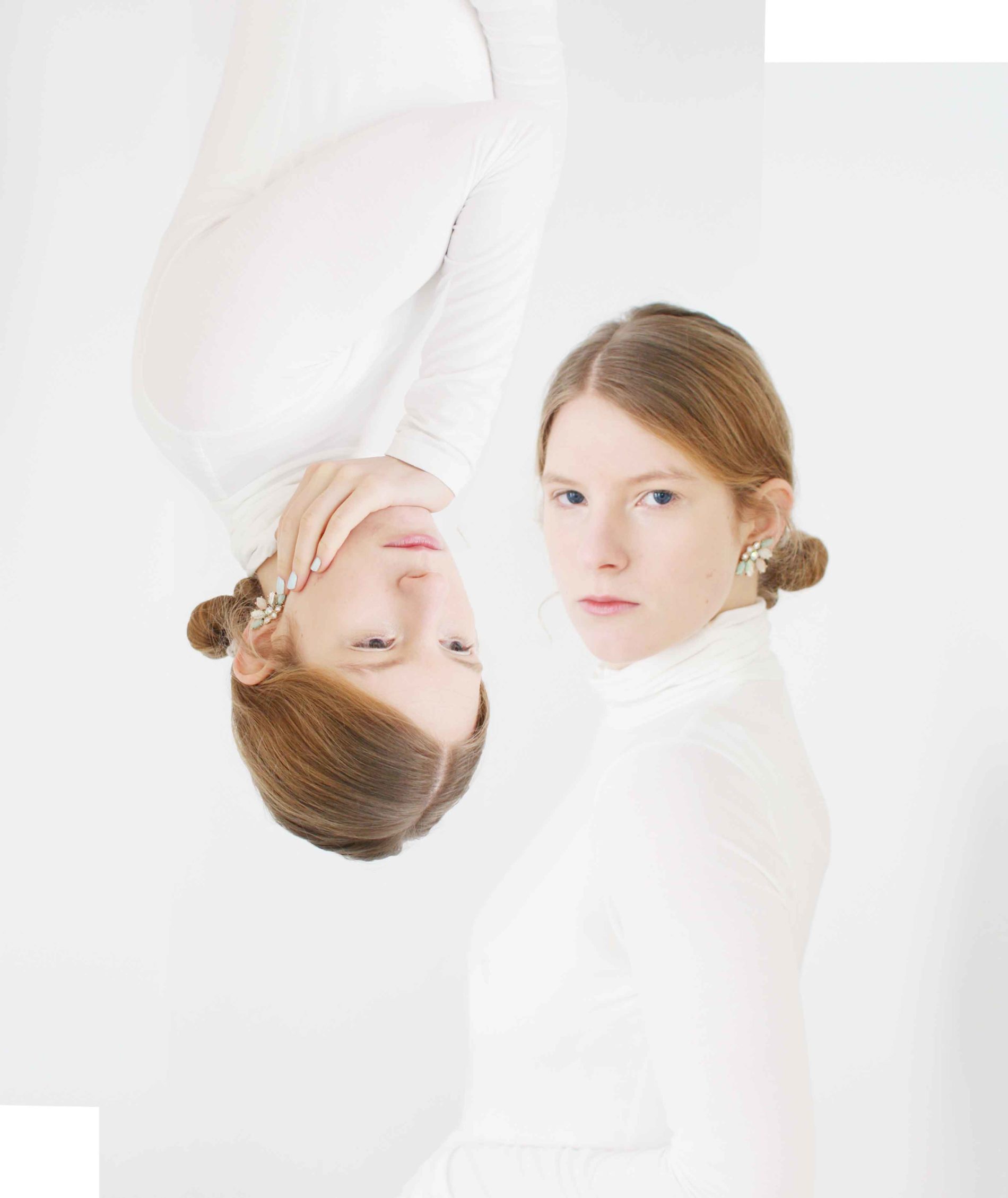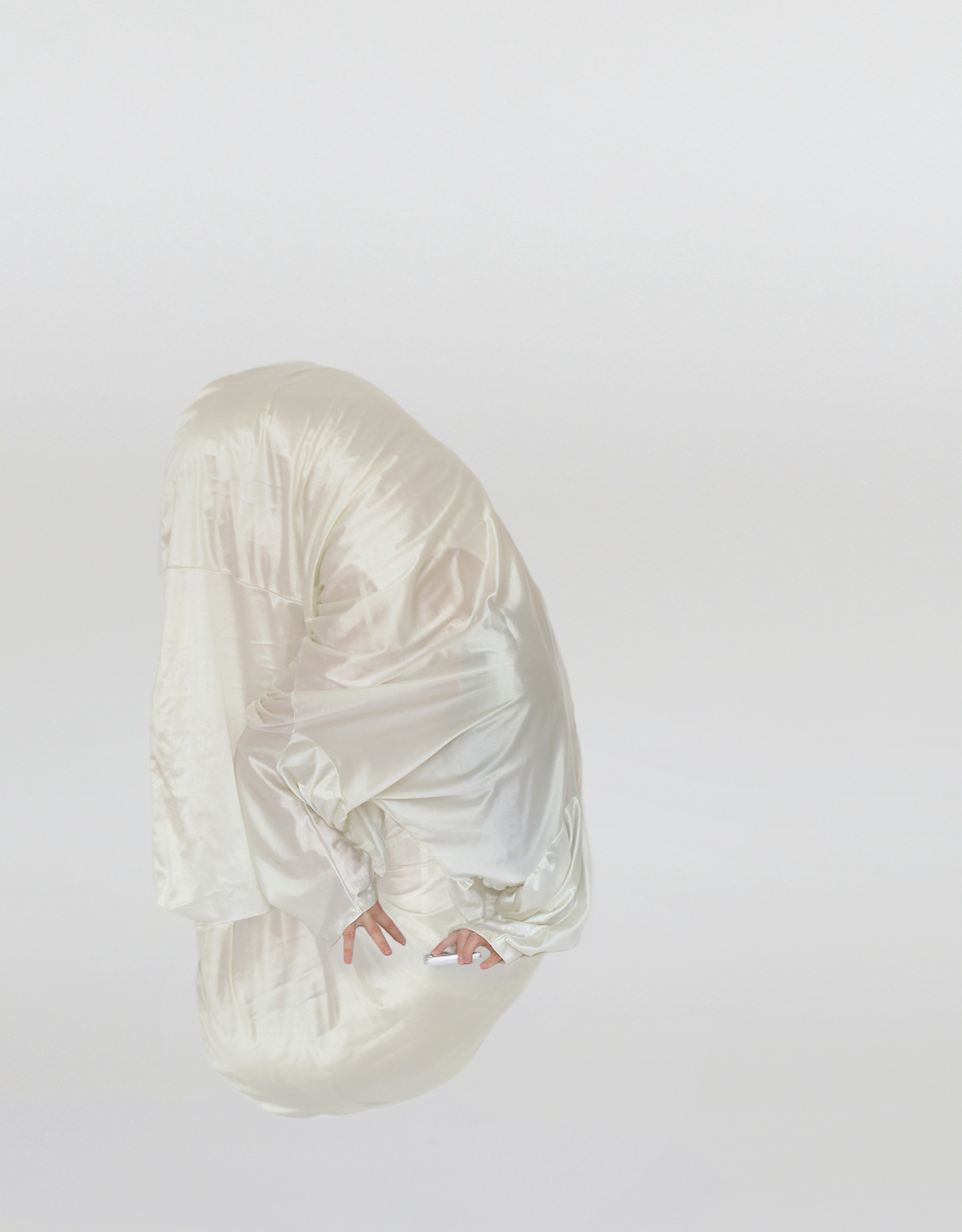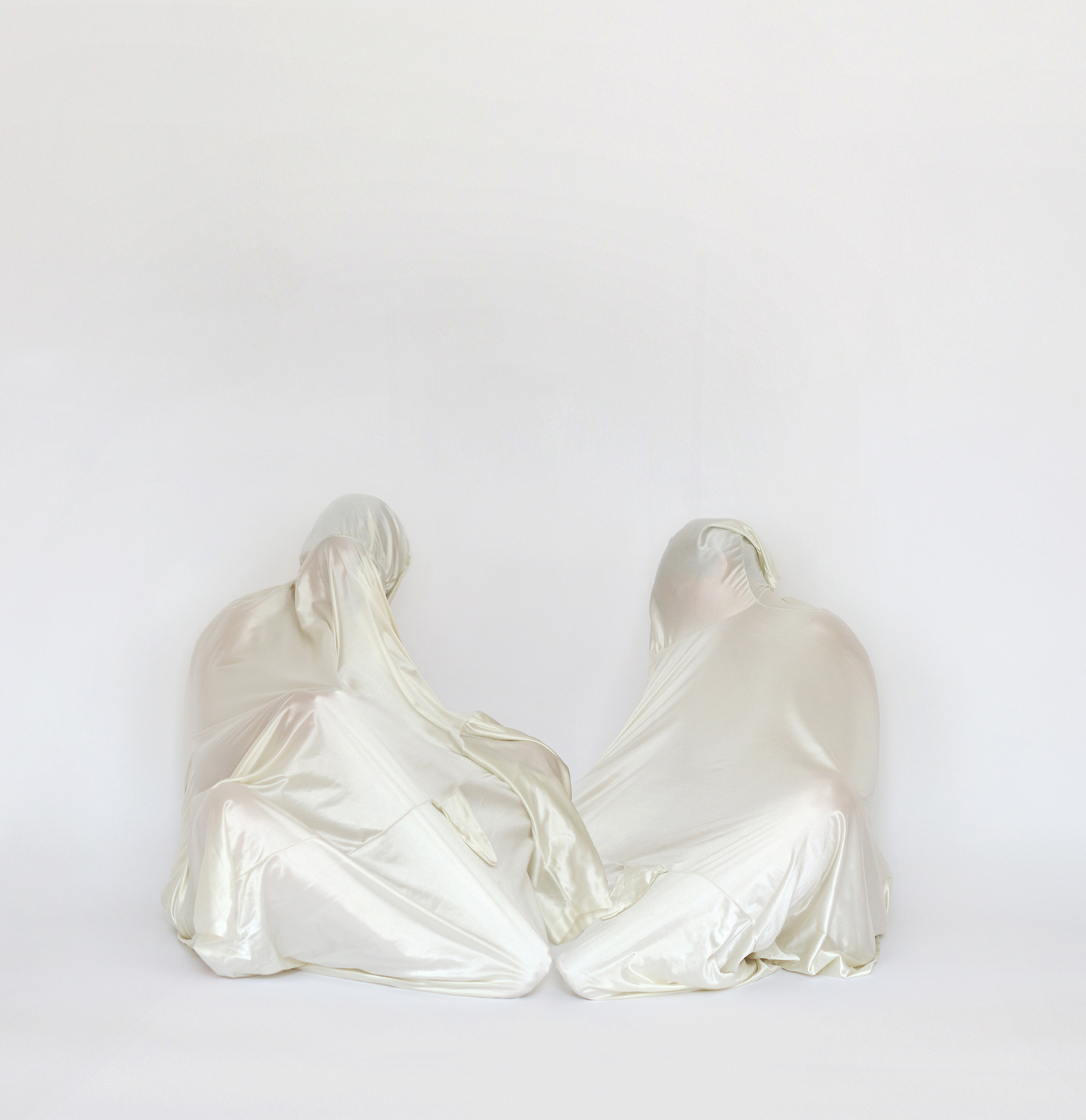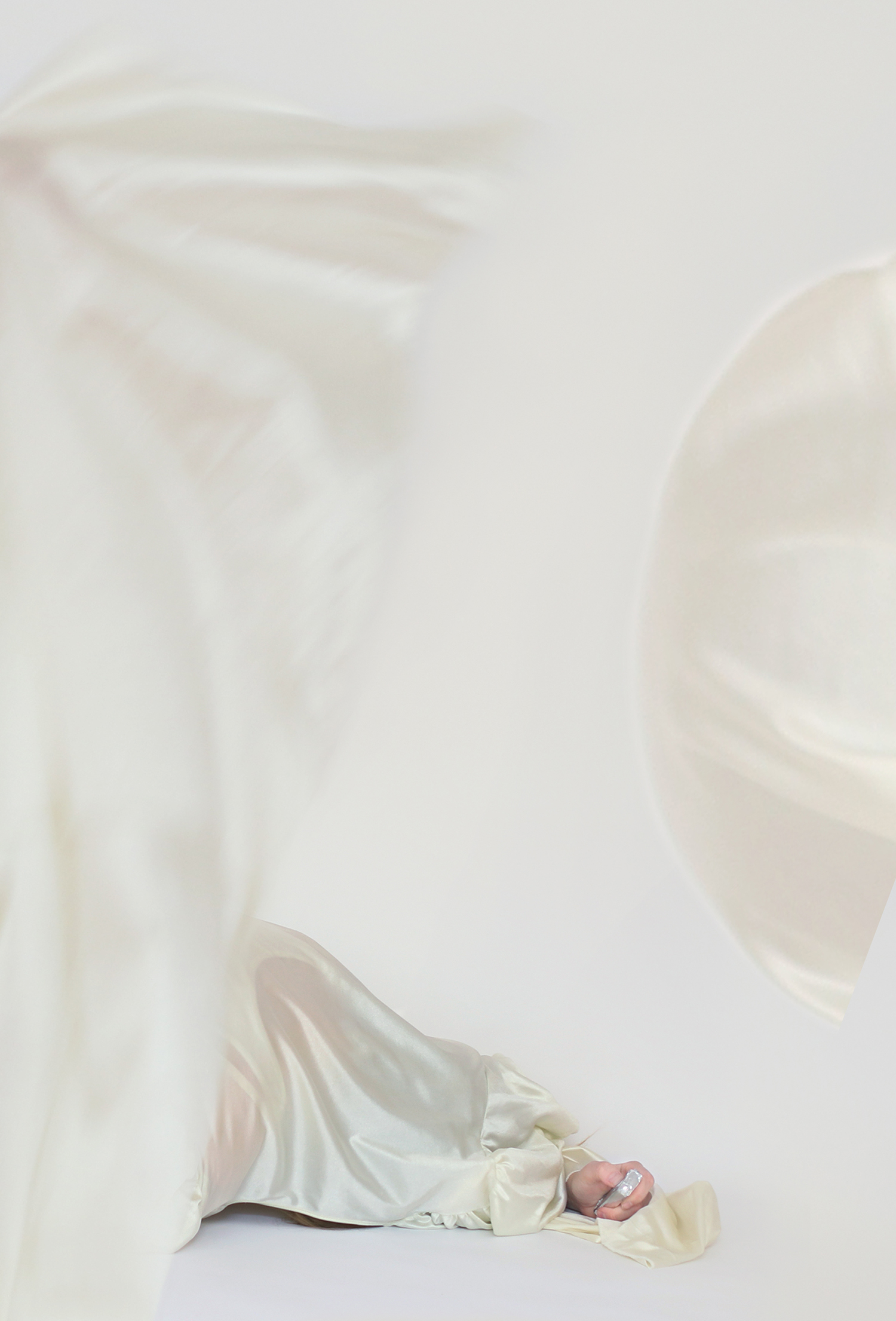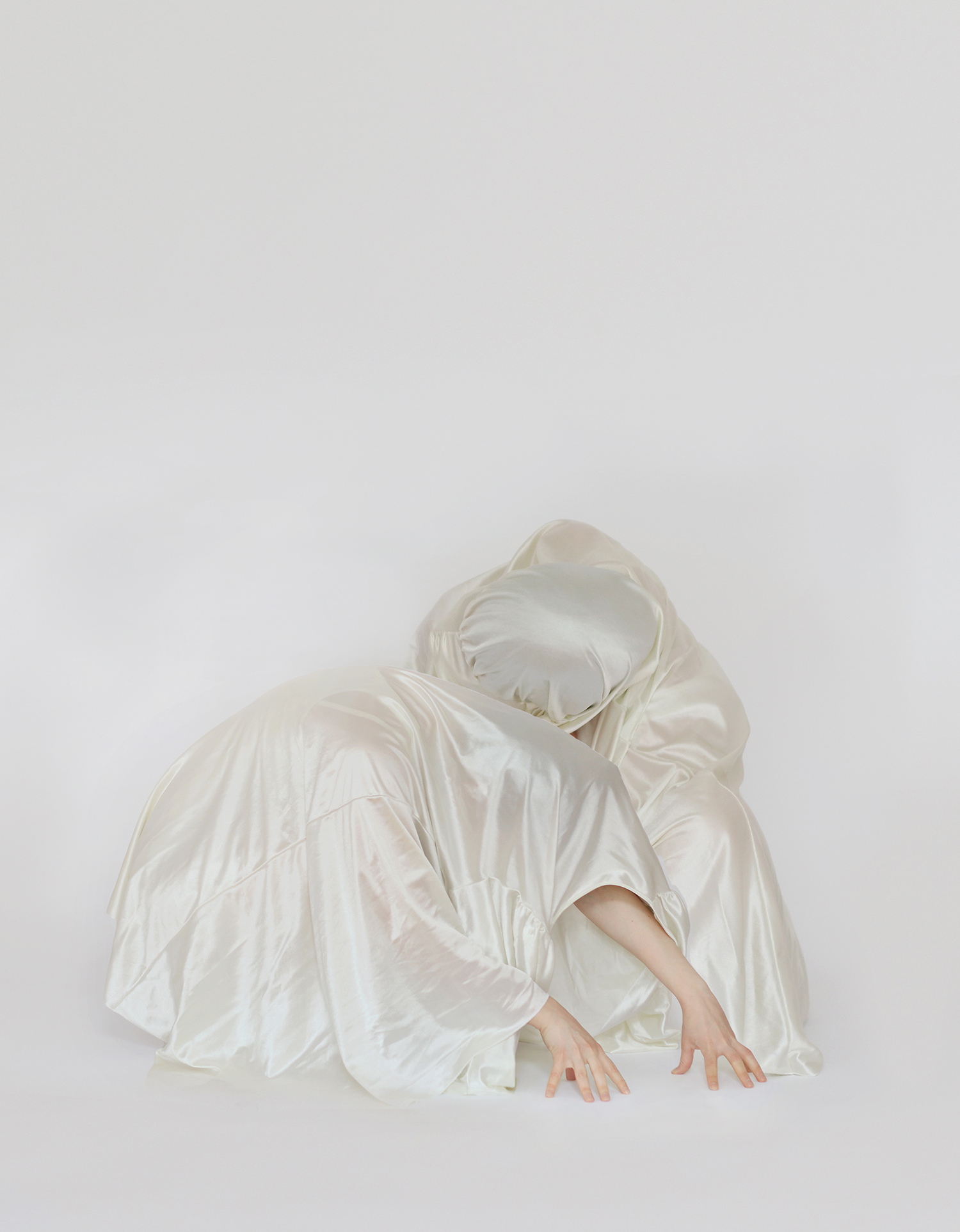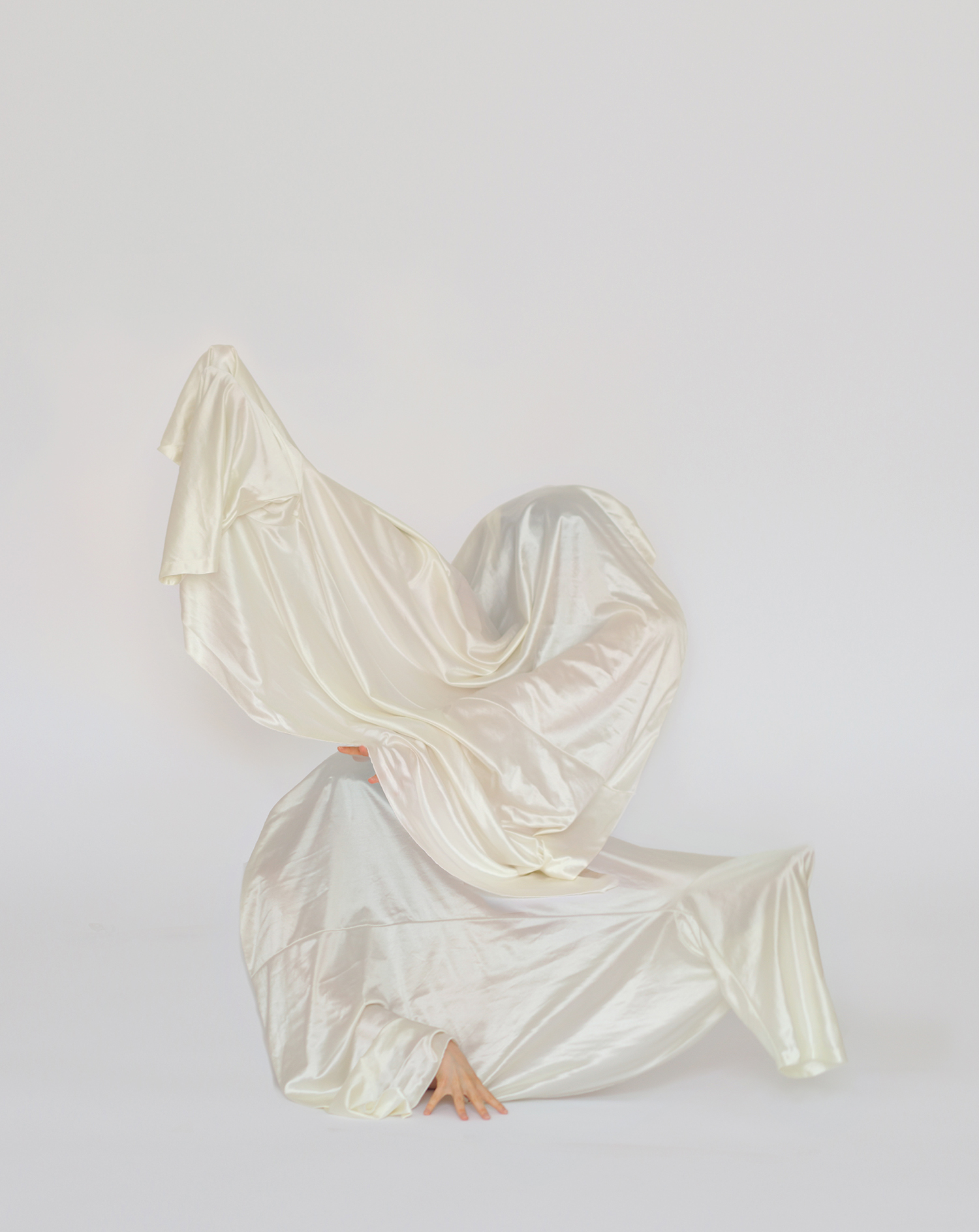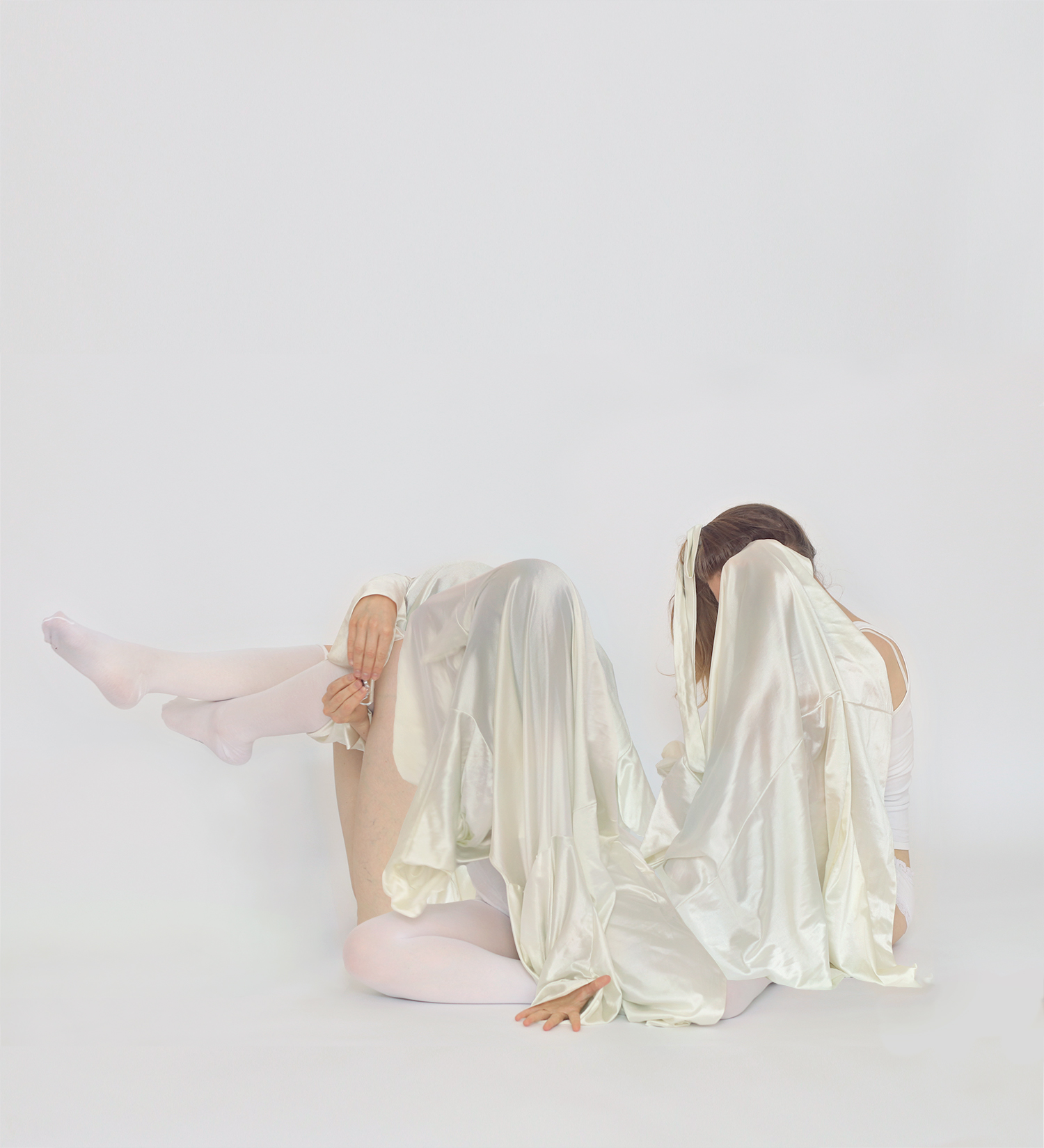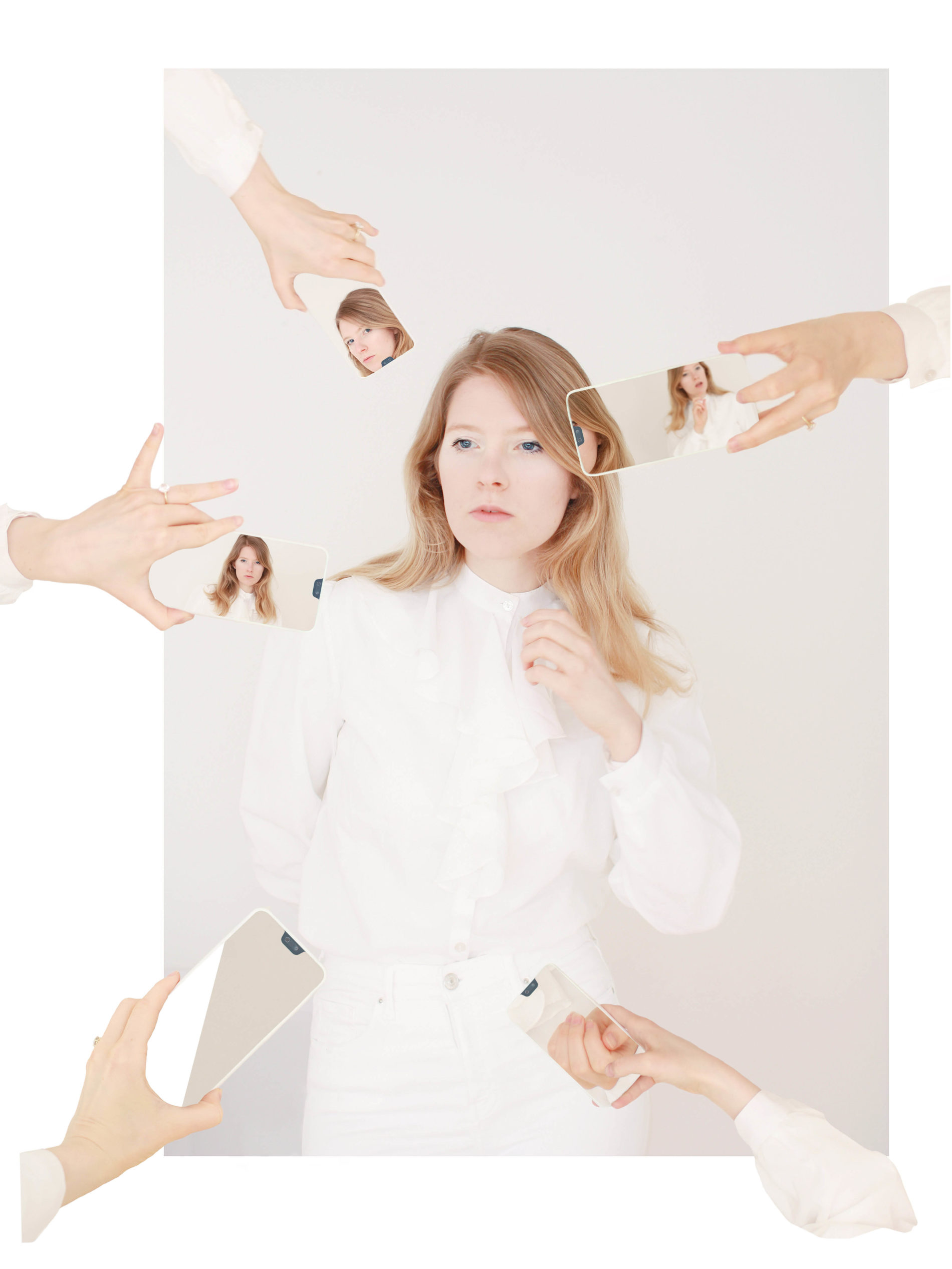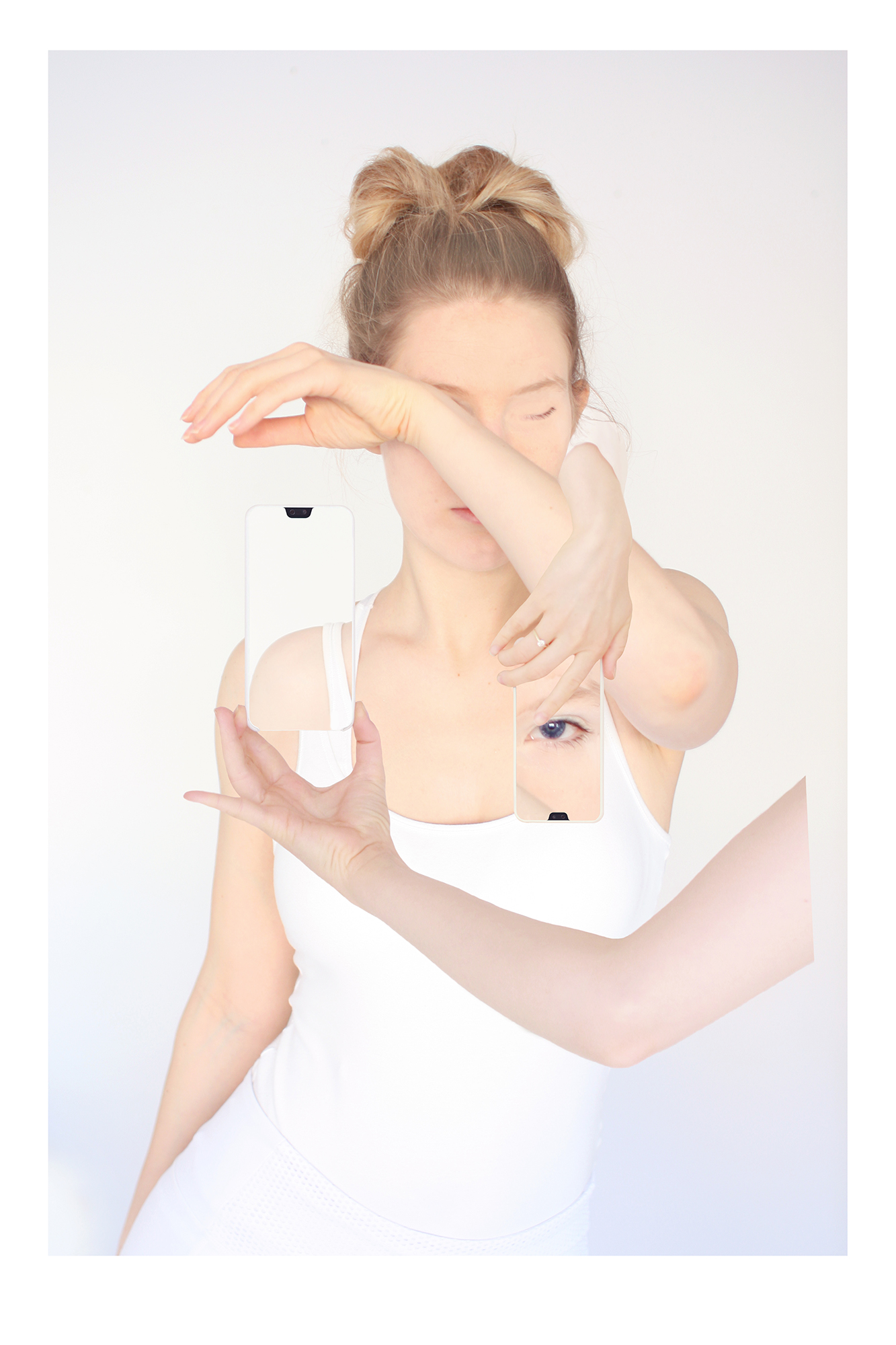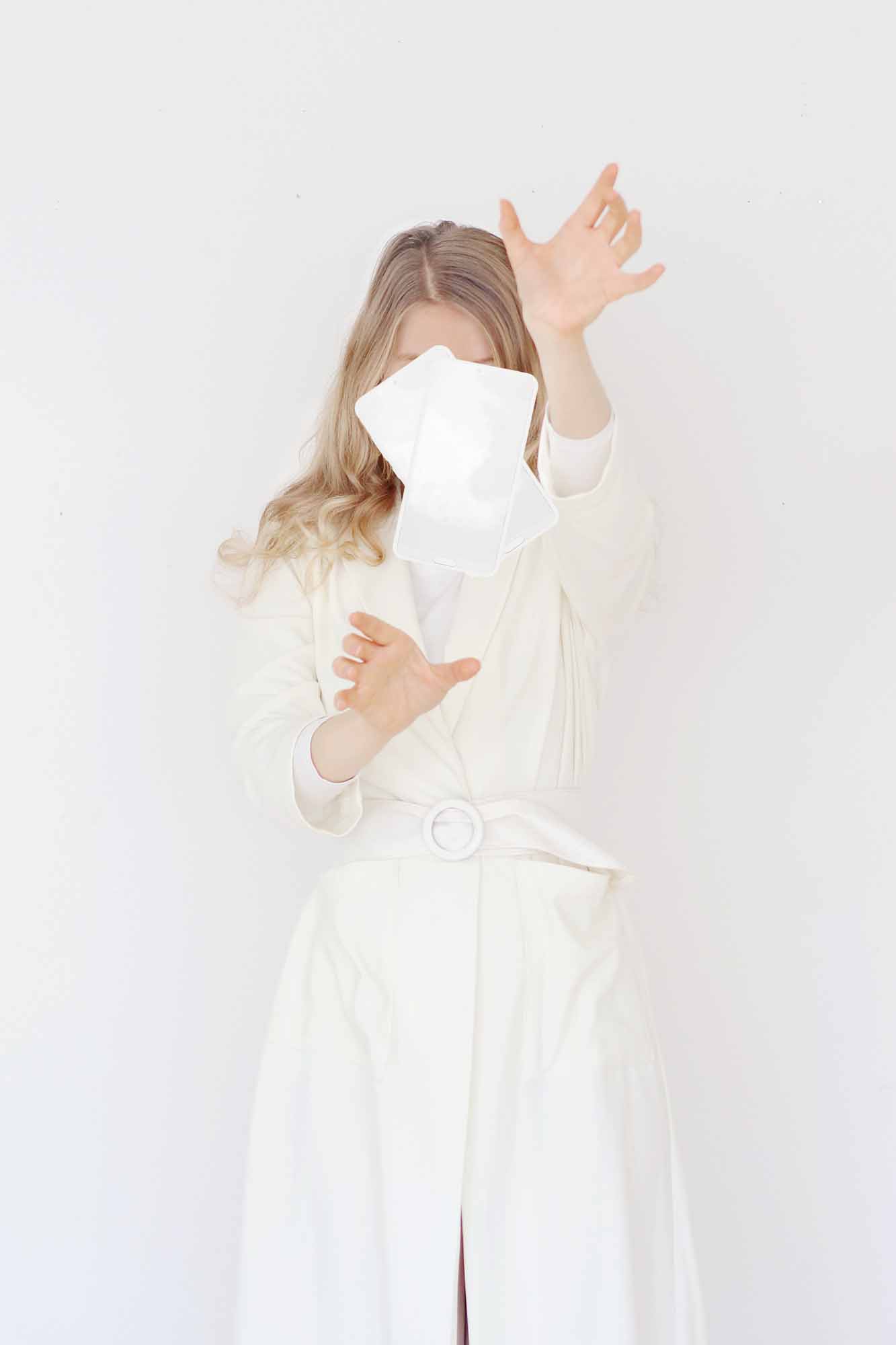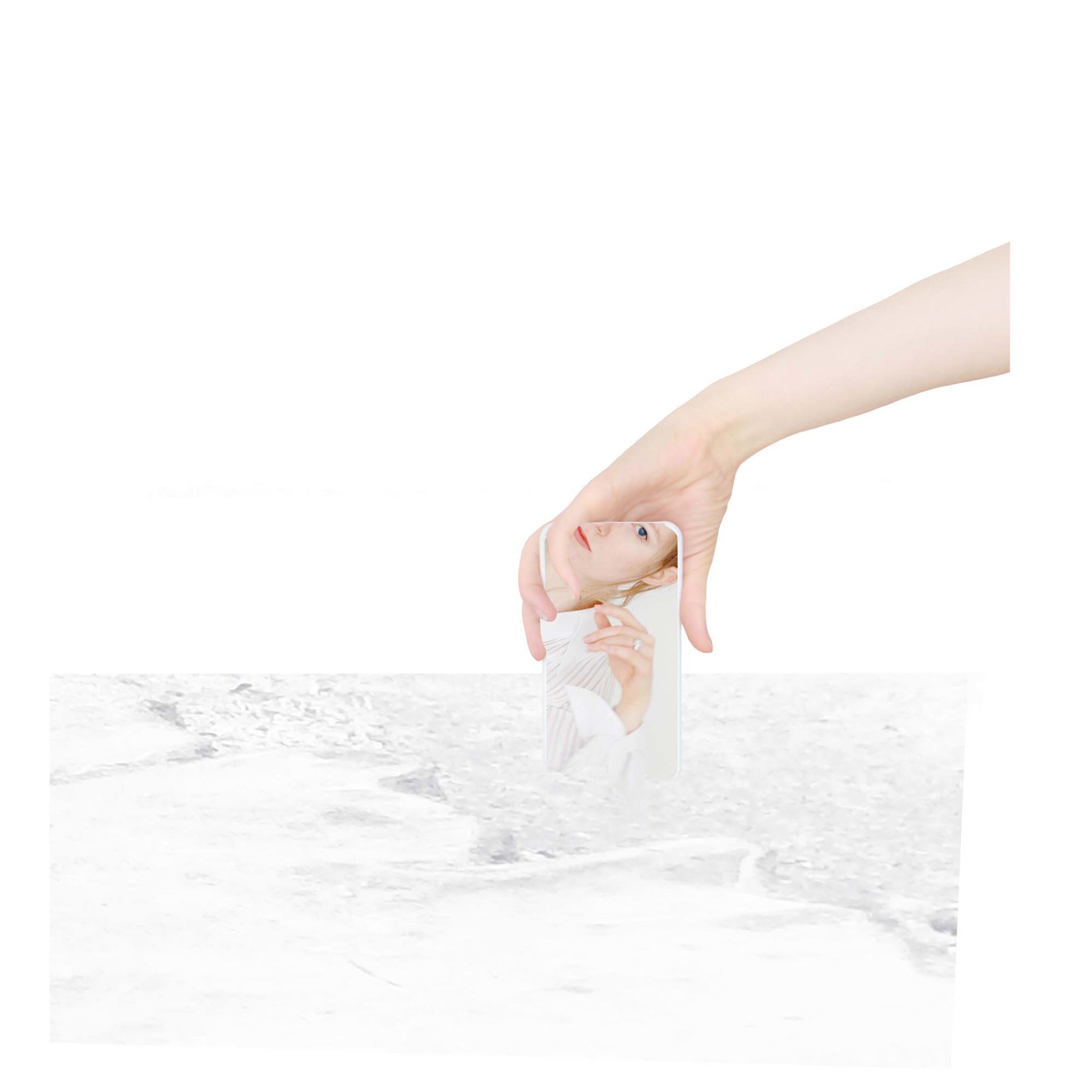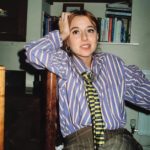MAGAZINE
Interviews with 'Hivemind' Artists
Jean-Michel Rolland
Sabotage
Jean-Michel Rolland has been selected as one of the winners of our ‘Hivemind’ Open Art Call with his work “Sabotage”.
wendy.network defines Hivemind as “a collection of minds somehow linked”. How do you define the term hivemind and how does your work “Sabotage” relate to this?
I think that the hive is a class system. And in a hive, there is a Queen and the bees obey orders. The bees are unable to disobey the Queen because the Queen never asks something that goes against the community. What if the Queen goes crazy and orders the bees to kill each other? I hope the bees would disobey. So I think the hivemind can be understood as a collective power but also as a collective blindness. It depends on the path to individual consciousness, in cases of crisis. And sabotage is linked to the hivemind because I know we can not change the world all alone – we have to be part of something bigger than us. However, we should never forget that we are individuals and should distinguish between the good and the bad. When the hivemind goes and you don’t feel like going too, it is time to disobey
“Sabotage” is a one-character video but there are many of them on the screen. They are supposed to all act the same way but they do not.
Who exactly is the Queen bee?
The government. I think all governments act as Queen bees but there are democratic governments and dictatorships which are already proof that the hive has got out of hand.
Could you tell me a little bit about yourself and your practice?
I am a French artist. I live in Marseille, in the South of France. I am mainly working on video-art but I also produce generative art, interactive installations and audio-video performances with a desire to make people see things from a different point of view. In fact, I like to twist reality to help people be able to think differently.
Can you tell me more about the conception of the work “Sabotage”? What was the process and what led you to the concept?
I think the idea came first with what happened at the American Congress. It was the last straw on the camel’s back. We had some acts of civil disobedience in Europe against the coronavirus restrictions. In France, there were the yellow jacket activists which lasted one year and demonstrations every weekend. There were the Black Lives Matter protests and all of this made me think about civil disobedience. It happens a lot, in both good and bad ways because civil disobedience can be used to cut democracy… I think that is a problem. So I wanted to talk about that here, in one way or another.
For this artwork, I thought about myself on this occasion and frankly, I think I am a good little soldier: I pay my taxes, I don’t harm anybody, I try to fit in society. But when I think that a rule isn’t fair, I don’t comply with it. I try to fight it. That is why I wanted to show in “Sabotage” me pretending to obey, but in fact, doing as I wish.
Do you feel that this is a particularly important moment in history in terms of these rebellions?
Every period in history has its civil disobediences and societal problems. For example, Henry Thoreau was the first to write about Civil Disobedience in 1849. It was about consciousness. He was sure that slavery was evil when it was legal and he was also against the war with Mexico at the time. He found that very unfair. So he decided to fight against this war by refusing to pay the taxes that were financing it. That was the beginning of the civil disobedience. Before him, there was Étienne de La Boétie in the 16th century. He wrote that passive disobedience was enough to break the change of domination. Tyrannies need the support of people. If people don’t play the game of the tyrant, the tyrant will lose. So each period has its difficulties and civil disobedience even if the word is quite recent.
What made you come up with the idea for this work, especially creating the artwork in your house?
It was just a funny thing in fact. To be wearing jeans that everybody has – it is a kind of uniform. Without even wearing a t-shirt, it felt very at home, not a uniform at all but it is a uniform in itself. The fact that it is at home – you can disobey from home. You don’t necessarily need to go out on the streets to demonstrate but you can act at home.
How?
You will have to figure it out. With the internet now, we can refuse to do things.
There is a variety of art on your website, I was wondering how your art has developed over time?
In fact, I began doing video art in 2010. Before that, I spent much time doing music and painting so I began creating as an ex-musician and painter. All my first works were what I call “Rhythm and Split.” The themes were musical and then it evolved because I learnt to use Java language with a free software called Processing that enabled me to make generative art or interactive installations with sensors, connectors and things like that. I found that I could use this Processing software to affect the videos I produced. So it is a question of technique – like a painter for example whose painting techniques evolve over time. It is similar. It is a question of technique evolving and so the way I manage the videos, I decide to shoot. That changes everything in fact.
What is the importance of music in your videos?
Firstly, because of the specificity of video art. There are two mediums at the same time – the image and the sound. Generally, there is only one medium – painting is one, music is one etc. And so this specificity, I show that it has to be experimentative. I think I always wanted to settle a dialogue between sound and image. Not just put them together and let them go but make them talk.
What came first, the music or the video?
In fact, what comes first is something that I see and hear… the natural. For example, I made a video that is called “Neons Melody”. You know on the ceiling.. the long tube light bulbs, they sometimes make a noise when they are old or breaking. They flicker and make a tack tack tack noise. I saw and heard this and I wanted to work with this so it came in the same package.
And the second aspect of video art is time. In classic art, there is no time, only in music, in fact, so I think the temporality in video art – it must be experienced. It is a constraint because when you do some video art you have to think “stop” at one moment. It may be one minute, it may be ten minutes or more. But if the video is very long, it has to mean something. And if it is short, it has to mean something too but it could mean something very different. The reception by the public will be completely different too. So the duration and the “decoupage” – the cutting is very important too. This is a playground for me.
Other works such as “Confiance” question the relationship of the human being to the internet and the daily data theft of which we are the victims. Where is trust and confidence today?
It is difficult. I am generally an optimistic person but I am a bit pessimistic about liberties in the future. When you see, on the one hand, all the data collected on us and on the other hand the development of CCTV cameras, I think that the future dictatorships will be much more powerful than before. For example, I think that China is a research lab for this new kind of dictatorship and I am afraid that even in my own country, one day there will be an authoritarian regime which will have all the tools from preventing us from resisting.
But for Covid, I think that the measures involving the deprivation of liberties that we have these days, they are dictated to do good so I will not blame them. However, vaccination-proof could be a problem if we are asked to do things for example.
Do you use the internet?
When I use the internet, I try to be as private as I can be. But even when I want to buy a pair of trousers on the internet, for example, I go on a website and the day after I have advertisements for trousers related to the ones I was looking at. It is scary.
Are you in the process of making any artworks? Any artworks related to Covid?
I don’t work on projects related to Covid. If there is a festival and I want to be in this festival and if they published an open call with a theme and if I am not inspired by the theme, I will not produce something good. I know it. There have been many open calls related to Covid, but I do not feel like working on it.
This video, “Sabotage” is very recent so I am now thinking of what will come next. But I do not have one precise idea at the moment. The video just before I made “Sabotage” was called “Affordance”. There is a link between “Sabotage” and “Affordance”. It’s ubiquitous to be at different places, at the same moment and I think I am interested in this. Perhaps I will make a series… we will see.
Why did you decide to join wendy.network?
For two reasons;
Firstly, video art is still hardly known in fact. We need artists, we need connections and synergies to help it work. I think that Wendy can be useful for this.
The second reason is that I am engaged with the democratization of art. I think that Wendy could contribute to this by organising free online exhibitions for example. That could be great. The main difficulty is always the same – the ability to reach a new public; people who don’t know what contemporary art is. It is always a very big problem to reach out to a new public.
I wanted to say a final word about Howard Zinn. I describe my artwork “Sabotage” alongside Howard Zinn’s statement “Civil disobedience is not our problem. Our problem is civil obedience.”
I think that this statement is very important because he wrote such words after the Nuremberg trial where some death camps soldiers said they had just obeyed orders. They didn’t feel guilty. This really was the problem. Everyone, even soldiers, must have consciousness. They should be able to disobey orders when they feel that these orders are corrupted or evil.
And the German philosopher, Hannah Arendt was in the same position.
To finish, I want to talk about the Milgram experiment. It is a white coat guy, a director, who asked some guinea pigs to send electricity on an accomplice of the researcher and even if the accomplices don’t really receive electricity, they pretend to so they suffer, they yell, cry, say stop. And as long as the white coat guy says “just increase the electricity, they won’t die, it’s ok, just go on” – many people will just go on just putting electricity so it is terrible. We humans, we sometimes behave like bees. We really have to think about ourselves. Ask our consciousness, is what I am doing good or bad?
Do you think art can help to create more awareness?
I hope so.
Thank you so much for taking the time to participate in this interview.
I want to say thank you to wendy.network and Molly for giving me this window on the world and letting me express my opinions and explain my art.
Franziska Ostermann has been selected as one of the winners of our ‘Hivemind’ Open Art Call with a series of works. “Firn” displays 7 photo-montages. They are self-portraits of the artist which encounter the various fragments of herself. “Self Observations” displays 6 photo-montages. In this series of works, Ostermann questions if identity is no longer bound to the physical appearance in the concrete world? And finally, “Off Faces”- 10 photo-montages which display figures covered in white satin. Their physicality reveals themselves through the force of gravity to which the figures appear to be subject. Where does identity begin and where does it end? Which gestures reveal a movement or shape to be human?
wendy.network defines Hivemind as “a collection of minds somehow linked”. How do you define the term hivemind and how does your work relate to this?
I think of it as a connection of entities that is not visible but nevertheless there – being one despite separation by time or space. It is somewhat magical, not visibly comprehensible at least. I think hivemind has its meaning already contained within itself. It’s two-fold, the mind itself is a hive – it constantly shifts, buzzes, changes, rearranges. It’s a swirl of fragments, of splinters of the self. This is a theme that is very central to my work as well.
Could you tell me a little bit about yourself and your practice?
I am a conceptual artist whose main medium is photography. One central topic for me is the photographic self-portrait. When I take a portrait of myself, I am the photographer and the photographed at the same time. I am spatially separated from myself by the camera, I am doubled in space as well as in time- or am I split?
I recreate this duality of the trigger pulling moment in the composition of the images. I form a dialogue within different splinters of myself, online and offline.
And so you are almost frozen in time when you take this picture. This is you at that moment and then you change as time goes on.
Yes, a photograph cannot catch identity as a whole, no medium in the world can. But photography has the ability to collect some of the splinters that identity consists of.
I also read that you write. What sort of writing do you do?
I like different types of poetic writing. I wrote a poetry collection that was published by my university when I graduated.
What topics do you write about? Is it related to your artwork?
Yes, all my work is interconnected. My poetry debut ‘Oszit’ explores the relationship between a you and a me that is not clear or specified. The poem ‘der Mückentod’ circles around a relationship of two that are separated by time but communicate with each other through the seasons.
The thought of taking away the dimension of time and letting people meet despite being born too late or too early to actually meet each other fascinates me.
Through poetry and art I can overcome the separation of time.
So what do you mean by the notion of time?
Well I mean, for example, my ancestors… maybe my great-great-grandfather that I never met… if there was not the obstacle of time, I would have met him. We live maybe in the same city but we will never meet each other because of time.
Is there a particular person that you would like to meet if there wasn’t this notion of time?
I think meeting my ancestors would be interesting. Also artists, in particular female artists that may have lived a long time ago when their position in society was not good in comparison to ours today and how they struggled with presenting their art. I mean there must have been powerful women – I think it would be very inspiring to have a conversation with them.
Your work explores hyperreality, virtuality and matters of identity – What drew you to these topics?
Those topics are inherently contained in the character of my main medium, photography. Photography holds a threshold function as a mediator between the real and the virtual. By her means, a body can be transformed from the concrete world to the digital. But this transformation is not without loss. As a photograph always offers a fragmentary view of what it pictures, the transported self is now a different one, virtual. When those splinters of identity start a life of their own, detached from their source, they become hyperreal.
To specify, I don’t think the virtual is less real than the real. I ask, does it even make sense to categorize what is real and what is virtual or is the new currency another factor? Maybe human connection or emotions that travel all those stages of reality.
How did you start taking pictures? Is that how you started to be interested in identity?
I started photographing myself when I was in my early teens. I had a little digital camera and took it to places surrounding the house I grew up in. In a way that is what I still do, only that I take the pictures in my studio now, but still with available light.
And selfies… were you a fan of a selfie?
The term selfie was captured in 2002. When I started taking self-portraits it already existed, but it had not reached me yet.
Since then the urge of taking photographic self-portraits has taken over the world. I am trying to find the answers to this occurrence.
I think the selfie is a manifestation of a feeling lying beneath: The urge to reassure one’s existence.
Why do you take selfies? Even when you were young, why would you take these selfies?
I think, to encounter myself. Nowadays I often ask myself if my works are selfies or not. What specifies a selfie? I think there is a wide grey area between a photographic self-portrait and a selfie.
Do you think the word selfie is negative?
I think it is connotated quite negatively because it was confronted with the narcissistic theme it supposedly contains. I don’t see it. I say this is a misunderstanding, maybe a generational conflict. I think it is just a strategy of communication.
Your work appears to tackle the relationship between the internet and identity. Do you think the internet changes our perception of our identity and if so, how?
Yes, I think with the rise of the internet, identity became more fluid than it originally appeared to be. It exemplified the fluidity that already existed. The ways of the internet heighten and carry different aspects of identity.
The internet somehow acts as a prolongation of splinters of identity, that might have otherwise fallen into the unknown and gives them a life of their own.
What type of camera do you use/ what is the process you take to create each portrait? When taking a selfie on your phone, it’s an instant and informal image. Does your relationship with the image change once you’re in a studio or in your room or using a digital camera etc.?
I use a Canon DSLR-it has a flip screen and a fixed lens. I use a tripod and a remote control. I need to be unreachable when I take pictures to focus on my work. The digital offers me the ability to keep in touch with the pictures I take in an instant. I need this dialogue to get into my flow.
I was also very interested in your gaze in “Self Observations” and “Firn“. It feels very powerful the way you stare at the camera… do you feel like you’re in control of the camera or the camera is in control of you?
I feel more in control. I embody two roles: the photographer and the photographed. This way I can get closer to myself than if someone else took a picture of me. But maybe this is an illusion, the camera is very powerful.
When you take the pictures do you know what stance you want to make/ how you want to look at the camera or is it more spontaneous than that?
I think it is both. Often I start with an inspiration or a feeling or something in my head, but it changes shape when I try to visualize it.
I noticed on your Instagram that you are no longer using the #femalearitist. Do you think your gender has an impact on your work, in terms of your opinion on your identity?
I wish the word “artist” itself contained all genders equally. And yes, I think it is possible to find trades with female connotations in my work.
My gender is always a topic and me being a woman in the art world..it is not always the easiest thing. I think it is a process of learning and positioning myself.
Of course, there are symbols of femininity that are in my work but I don’t place them there willingly or consciously. It is just a part of my identity and they get interwoven into what I decide to publish.
But I try to be a little braver when it comes to fashion and what I wear in my pictures because when I was at University, it seemed that fashion was beneath the art. Now that I have not been at University for two and a half years, I don’t like that idea. I don’t think one art form should be below another. I think it is nice to show a spectrum of identity through fashion and why should that be a bad thing? I also think it is very important to establish femininity, to take on those themes.
I notice that white is a consistent colour in your work. Furthermore, the title of your series, “Firn”, is a type of snow. What is the significance of this colour?
I am utterly fascinated by the colour. I find it very intriguing that it marks either the presence or absence of all colours simultaneously. I find that very poetic. It also offers a wide spectrum of interpretation and meaning from peace and innocence, to death and grief, to new beginnings and blankness. I like to be surrounded by it and I think that also reflects in my work.
How do you think identity has changed with Covid-19 e.g forced isolation and people more present virtually than in reality?
I wouldn’t say identity changed but shifted, the online persona became more relevant and the appearance in the concrete world less important for it is not seen that much by others. And this “being seen by others”, this dialogue, has also shifted its weight. We cannot look each other in the eyes in a video call, so the view is obliquely, indirect. Familiar communication structures become purposeless. This distress needs to be addressed and handled, translated. That’s where I see a huge potential and urge for contemporary artistic positions.
Are you in the process of making any works at the moment?
I always draw a lot of inspiration from the internet. Like the offline everyday life, it is soaked in the contemporary. The urge to translate emotions and human connection into the virtual is not new, but reinforced by the radiation of the pandemic.
The importance of digital connection is part of the pictures I am currently working on.
Thank you so much for taking the time to participate in this interview.
I am so excited by this project and it is such an honour to have been selected by wendy.network.
Liyu Xue
60s,24h
Liyu Xue has been selected as one of the winners of our ‘Hivemind’ Open Art Call with his work “60s, 24h”. “60s, 24h” captures the ongoing action of two performers and geometries inhabited in the phones. Enabled by the AR technology, the work considers the embodied simulations and creates different ideas of the bodily presence.
wendy.network defines Hivemind as “a collection of minds somehow linked”. How do you define the term hivemind and how does your work relate to this?
I resonated with Hivemind as “a collection of minds somehow linked”, and particularly interested in how those linkages are made, so I would like to extend the definition to “a collection of minds and bodies somehow linked in both virtual world and physical world.”
When we talk about the mind, we usually associate it with the brain, consciousness, intentionality, and the separation and superiority over the body. However, the recent discovery in the neuroscience realm may suggest something completely different. Based on the research of mirror neurons and spread mind theory, I discovered that the performance of bodily processes is actually much more actively involved in the cultivation of the mind experiences, and the consciousness is not inside our mind, but identical with the objects surrounding us.
My performance piece “60s,24h” is an investigation of mind and body linkage between performers and the virtual and physical world. By adding the AR phantom geometries, the consciousness spreads between the virtual and physical world and forces the performers to rethink the interpersonal and spatial experience. The work confronted the intentionality of the choreography: the process is not concerned with making sense of what movement sequences are executed, Instead, the sense is made when performers correctly perform the mapped actions within their phones through the firing of their own mirror neurons and subsequent performance of their bodies.
What was the process that led you to this artwork?
It all started when I took gaga dance workshops at Mark Morris Dance Group in Brooklyn back in 2018. Gaga is a movement language developed by Israeli choreographer Ohad Naharin, and it’s based on deep listening to and awareness of the physical sensations. The workshop has a huge emphasis on the multisensory and imagery: we would get instructions like “mirror the movement of me (instructor)”, “imagine your feet are pushing away the floor and you are floating in the water”, “feel the sensations when your shirt brushes your skin”, “feel the space of the dance studio”, etc. It helped me liberate the body from the mind.
Around the same time, I was also experimenting with AR as an art medium, and I thought why not making an AR performance piece to explore the mind-body-space connection, which ultimately leads me to research in the neuroscience field and creating the piece.
In the video “60s, 24h” I find the eerie music really interesting. Can you tell me about how or why you chose that music?
Thank you for noticing the sound! The piece has four different screens: performer’s view through the phone, movement of the geometry, performance through the spectators, and an overlay of the performance and the phantom geometries. Each screen has its unique visual quality, and I used this space noise sound as a mediator and bring the screens together. The sound echoes the slow and heavy movement of the phantom geometries, and the uncertain and electric impulses of the virtual world.
What is your opinion on AR?
I think AR has a huge potential as an art medium. The technology breaks the boundary and enables the dialogue between the virtual & physical world; it forces us to reconsider the artworks that spread in space and time; it’s affordable and makes the production process easier for artists; it offers a new creative placemaking technology for the public art…I recommend the book “Augmented Reality Art, From an Emerging Technology to a Novel Creative Medium” to any artist interested in the technology and its application.
Personally, my concern with AR art is that sometimes the experience can be a little static, and that’s also what I am currently working on right now, hope different technologies or interdisciplinary practices can bring more movement to AR art.
You quote Ricardo Manzotti’s words from The Spread Mind: “All experience is perception, and all perception is physical objects. Experience is not experience of something, it just is that thing” on your website- Can you say how that quote is significant for you? How do you understand it?
The quote is from his book “The Spread Mind” published in late 2017. This quote and his theory solve a huge problem for me: the separation between the physical object and the mental world. It suggests experience is part of the world, not just a neural process of the brain. Consciousness is where and when the physical object takes place, not an invisible activity underpinned by the neural activity.
I have to admit the “spread mind” theory is radical and contradicts some theories my previous works based upon, but it strikes me as we are free from the old stimuli and mental activities theories, we will find more connections with the physical world surrounding us. To me, that opens up a whole new world.
What is your background? Can you tell me about your interest in neuroscience and research into consciousness?
My interest in neuroscience and consciousness study and research definitely comes from my interdisciplinary focused art practice. I have a Master of Architecture degree from Pratt Institute. In the meantime, I also studied performance and lens-based art. Before that, I studied material science in college. You will notice my work often intersect with spatial experience, human condition, performance and has a huge influence from the latest technology.
Neuroscience and consciousness study liberates me from traditional ways of thinking about mind-body-space. The mirror neurons were discovered around the 1990s, and the spread mind theory was suggested in late 2017. That means there still a lot of myth waiting for us to uncover. Also, I want to note that I am an artist, not a neuroscientist, so my role here is not to exam the theory but to incorporate the theory or evidence into my practice in order to open the dialogue to a wider range of audience.
Your other works include “The Living End III” – A work that commemorates and raises awareness about the AIDS crisis And “350,’Mount Lee” which focuses on the performative nature of landscape photography. All three of these works, “60s, 24h” included, use this loud yellow colour. What is the importance of this colour?
Restlessness! The neon-like yellow color is loud and bright, but almost too bright and makes people feel anxious. But its existence is just a unique state without any judgments. I use the colors and the abstract shapes to reveal and amplify the restless energy and emotions embodied within the original image composition and offers a radical storytelling and a new space for speculation for the viewer.
Are you in the process of making any new works?
I would love to share some of the works I am currently developing. Recently I proposed a public art program for the city of Santa Clarita: utilizing augmented reality technology and interactive art to active the public during the pandemic and create an art and culturally programmed journey that connects the town with the community and offers a setting that safely embraces both the public and digital space.
I also started playing with artificial intelligence and trying to explore how can I incorporate AI into my artistic process and how to respond to the technology as an artist.
Is there anything that I have not asked that you would like to add?
I want to thank wendy.network for this opportunity. Also hope more artist will join the network and KONJUNGATE. I feel like talking about money in the art world is taboo, but artists are struggling during the pandemic, with the public funding shrinking, current unstable economy… decentralization is the key for us to change the game and support the art community.
